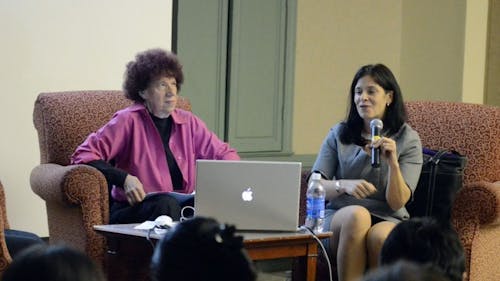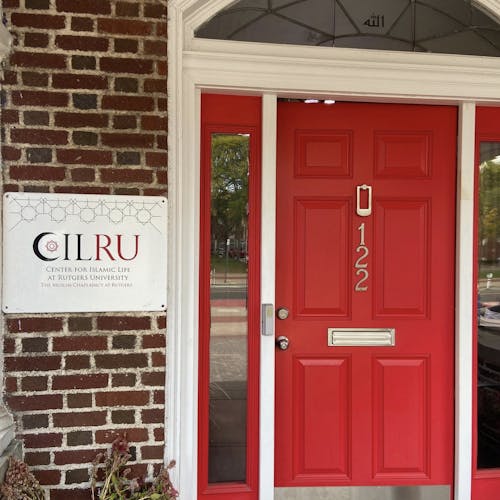Panelists tackle professional gender struggles

After receiving her Masters of Fine Arts from Arizona State University, Muriel Magenta experienced some difficulty in her field because of her gender.
To an audience of about 100 University students and faculty members, Magenta explained how she tried teaching in her alma mater’s painting department but was refused a position.
“I went up to my director and he told me, ‘We don’t hire women in studio,’” she said.
The director then told Magenta she could teach in a different department if she had a PhD.
“I decided I was going to do it, and five years after getting my PhD, I became an assistant professor in studio,” she said. “None of my male colleagues had to get a PhD to teach.”
Magenta, who is now a professor in the School of Art at Arizona State University, said her gender was an important part of her work — a concept that was touched upon last night in the Douglass Campus Center as part of the “Embracing Technology: Women in Science and Art Discuss the Virtual World” panel discussion.
“We need to make sure our voices are heard and part of those voices is my own,” she said.
The panel is the fourth in a series of conversations about arts and science, said Ferris Olin, co-director of the Institute for Women and Art (IWA), which sponsored the event along with the Douglass Residential College and the Office for the Promotion of Women in Science, Engineering and Mathematics.
Speakers discussed interactions and cross sections between art and science and how women could be more influential in both fields, said Anne Swartz, an art history professor at the Savannah College of Art and Design, who moderated the panel.
“Artists are using technology and are trying to see how to make art sexier, how to make it more erotic,” she said.
Rebecca Wright, a professor in the University’s computer science department who also served as a panelist, said the lack of women in the computer sciences creates a misconception of the subject.
“Many undergrads and many people in the public think computer is science is only programming but it includes a lot more things, including my work,” she said.
Wright was named the first full-time female director for the University’s Center for Discrete Mathematics and Theoretical Computer Science (DIMACS), which housed at the University but partners with other institutions in the industry.
Her focus is less on programming and more on theoretical computer science.
“I study the mathematical underpinnings of what the boundaries are in what is possible and not possible,” she said.
While Wright considers herself a feminist, she did not experience the same situations many women in science fields deal with.
“My mother majored in math at MIT, and I grew up with the idea that women do math,” she said. “I did not realize this was unusual until much later.”
During the conversation, Magenta presented a visual art piece titled “Times Square,” which showcased her other artworks in a 3D virtual representation of Times Square.
“I grew up in New York City, and I always loved going to Times Square and wonder if I would see my name in the billboards,” she said. “Every billboard in my Times Square has my name on it.”
Samantha Kelly, a School of Arts and Sciences sophomore, said the conversation pushed her to interact with technology.
“I thought the panelists opened my mind to working with technology, which I never really considered before,” she said.
Kelly thinks the art industry is getting easier for women to get into, but admits there is still a barrier.
“It is definitely getting better, but last year a magazine photographer who came to speak said the pictures on 11 out of the 12 covers in her magazine were taken by men,” she said
Magenta wants more people to collaborate from different fields.
“It’s important to go interdisciplinary and collaborate with people in other fields,” she said.
Magenta also said artists should not be afraid to embrace technology.
“Some people, particularly artists, think technology is cold. I disagree,” she said. “I found a lot of poetry in technology. It makes you think and it makes you more emotional.”



